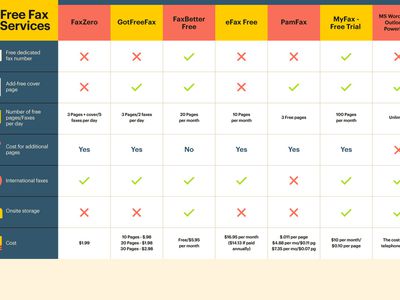
Ultimate Guide: Boosting Your Business with Advanced Process Analytics - Insights From the ABBYY Experts

Ultimate Guide: Boosting Your Business with Advanced Process Analytics - Insights From the ABBYY Experts
Tips for Maximizing the Benefits of Process Analytics
Ryan Raiker
October 23, 2019

If You Can’t Measure It, You Can’t Improve It.
Gone are the days of blind guesswork. Fully understand your end-to-end “as-is” process and discover valuable business insights to help to justify and implement your business process improvement, digital transformation, and business process re-engineering goals.
Quickly Create and Display Process Analytics
Within as quickly as two to four weeks, a process analytics platform can be successfully implemented and actively improving your operations. Programming is not required regardless of how complex your processes are. The user-friendly platforms make process analysis easy. Process analytics give far more insight into the performance and execution of business processes than any other solution available today. With advanced analysis capabilities, it is easy to drill in to problem areas and uncover root cause.
Understanding your business process just got a whole lot easier!
Process stakeholders believe they understand all aspects of their processes like what and when events are supposed to happen, who is supposed to do those events, and under which conditions they are happening. Most of the time though, process leaders do not have the proper tools or resources to investigate their process through its entire life cycle ensuring 100% accuracy and reliability. While traditional business intelligence tools provide big picture information, they do not provide the business user with a detailed description of what is happening in terms of the process across business units, regions, or IT systems.
Modern IT systems contain great volumes of useful information. We are in the era of BIG DATA. This big data contains a plethora of valuable information, that when utilized effectively can add huge insight for business users. With this information, business users can now detect bottlenecks that might be causing errors or increased lead time, reveal the most frequent execution paths, expose broken process variations, and many other hidden inefficiencies within processes.
With the ability to understand process data in more detail, it allows analysts to provide more information about how their business’ processes flow and which processes need to be improved. This provides the company with more value because it will reduce time and costs spent on uncovering and improving inefficient processes .
Things to Keep in Mind
1. Start small, think big.
Begin your discovery and analysis journey with a process that is better known. Starting a process initiative with something familiar will help to maneuver the platform and allow for quick small wins that lead to big savings victories. Choose a process where the beginning and the end are clearly defined. Each manager of such a process will benefit from insights that help to reduce costs or increase the effectiveness.
2. Focus on the business a goal.
Define the business value in terms of effectiveness (customer experience and revenue), efficiency (costs) and risk (reliability) and set goals that you want to achieve.
3. Determine who will be responsible for the project and its accomplishments.
Process improvement and especially process re-engineering projects require thorough planning and work. Therefore, the process improvement can’t be given to someone who will not have the time for it. A pitfall to many companies is investing in software to obtain process insights is that they never fully implement changes to improve. Avoid this challenge by determining who will be responsible for the technology and if they have the time and knowledge to do it properly.
4. Make your process improvement efforts actionable for workers.
Engage everyone involved. Process improvement and change does not happen in silos. Put a change management team together that has the competency to handle resistance. Try to involve the workforce in the process change as this will increase their willingness to follow the process in the future.
5. Facts don’t lie.
Process Analytics allows you to analyze processes based on facts instead of subjective opinions. Speak openly and transparently about the data that you use and about the facts that come out of this analysis.
6. Do not remain stagnant.
Optimize your processes iteratively. Identify ways you can improve with your customer in mind. Now that you have actionable insights, you don’t have to make wholesale process changes to see and be able to understand change results and impact. With this new type of analytics you can tweak and test. You can gradually improve your processes and use your process insights to continue identifying new opportunities for improvement.
7. Automate areas of your process to increase efficiency.
Expose redundant, broken or poorly executed processes, and quickly identify those with the greatest automation potential. Understand how automated processes interact with other process tasks and IT systems.
Digital Transformation Enterprise Process Mining

Ryan Raiker
Like, share or repost
Share
Subscribe for blog updates
Loading…
Connect with us
Also read:
- [New] In 2024, Channel Hunt Best Historical YouTubes That Every Student Should Watch
- 2024 Approved Crimson Codec Update
- Complete Guide to Hard Reset Your Vivo Y200 | Dr.fone
- Full Guide on Mirroring Your Vivo Y78+ (T1) Edition to Your PC/Mac | Dr.fone
- Hard Resetting an Nokia C300 Device Made Easy | Dr.fone
- How do I reset my Realme V30 Phone without technical knowledge? | Dr.fone
- In 2024, 4 Effective Methods Fake GPS Location on Apple iPhone 12 Pro Max/iPad | Dr.fone
- Simplifying Age Confirmation on TikTok for 2024
- Undeleted lost videos from Itel A60s
- Understanding the Legacy: How USB Composite Devices Differ From Modern USBs
- What You Need To Know To Improve Your Samsung Galaxy A24 Hard Reset | Dr.fone
- Title: Ultimate Guide: Boosting Your Business with Advanced Process Analytics - Insights From the ABBYY Experts
- Author: Ian
- Created at : 2024-10-04 19:58:05
- Updated at : 2024-10-06 15:18:31
- Link: https://techidaily.com/ultimate-guide-boosting-your-business-with-advanced-process-analytics-insights-from-the-abbyy-experts/
- License: This work is licensed under CC BY-NC-SA 4.0.